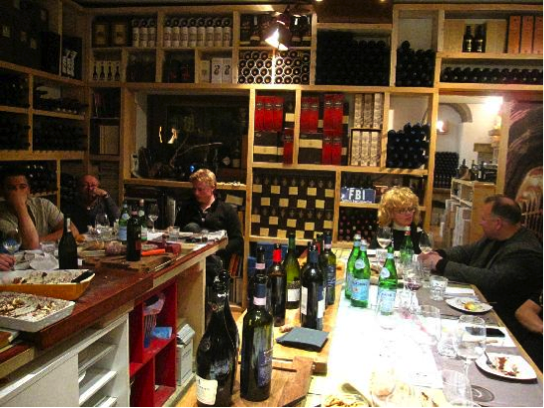In Rome (and New York, apparently) it’s either fashion or food. Today it’s fashion, and it’s all in black and white. Karl Lagerfeld once said, “Black and white always looks modern,” and this month in the fashionable neighborhoods around Piazza di Spagna and Via Condotti Karl’s dictum has been optimized. Women, men, thin, tall, short, heavy, young, old, and all the store windows are full of it.
But first, we need a soundtrack. Every fashion show needs musical accompaniment and these guys are a perfect fit. They call themselves Stageless, but they do have a CD and a Facebook page. They’re strictly street musicians. Yesterday they were in front of our apartment on Via del Babuino, where the narrow street with tall buildings creates an echo effect. The muted trumpet echoed in the neighborhood, and when we heard it through our open apartment window we had to go down to find out who was playing. These three guys are the best street buskers I’ve ever heard. They do upbeat, funky, New Orleans and soulful jazz, and they do it all well – especially the trumpet. We stood on the opposite side of the street, listened, and fed their open guitar case Euros. This morning we ran into them again in the big square in front of the Pantheon. Here’s a black and white fashion parade from the last two days in our neighborhood. Imagine, if you will, a soulful rendition of Summertime https://www.youtube.com/watch?v=YZWuyU-QC4E when you watch the black and white show unfold. – or this https://www.youtube.com/watch?v=51MB9fboJTE Let’s check out street fashion in Rome:
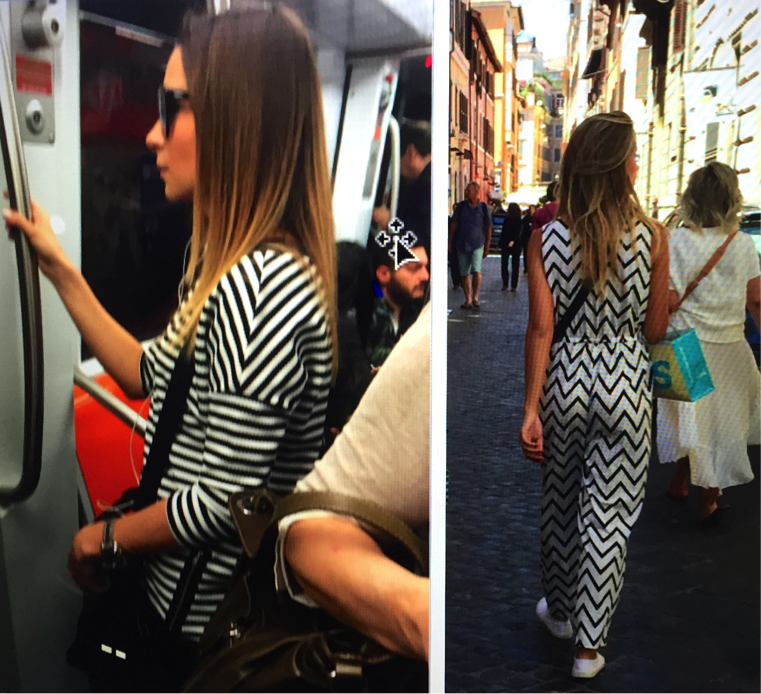 On the way to work, at the bus stop, on the Metro, or just shopping, black and white is everywhere. Having noticed the trend, I was curious to know what fashionistas were saying about it and found this by Lauren Laverne in The Guardian. “What better way to get dressed chicly, quickly, than by wearing black and white? In the words of Coco Chanel: “Women think of all colours, except the absence of colour. Black has it all. White, too. Their beauty is absolute. It is the perfect harmony.” Theoretically, of course, this is absolutely correct. Unfortunately it can be surprisingly tricky to get black and white right in real life. The problem is, simple and easy are two different things. Monochrome is simple but wearing it requires a bit of forethought. Try too hard and you’ll look like a French mime. Don’t try hard enough and you’ll look like a bored waitress (disclaimer: if you are a bored waitress this is an awesome look, carry on). The key is to choose the right monochrome for you, and style it up (but not too much).” It’s definitely trending (see my blog post #trendinginrome), and it’s trending from teen street wear to the Via Condotti power boutiques.
On the way to work, at the bus stop, on the Metro, or just shopping, black and white is everywhere. Having noticed the trend, I was curious to know what fashionistas were saying about it and found this by Lauren Laverne in The Guardian. “What better way to get dressed chicly, quickly, than by wearing black and white? In the words of Coco Chanel: “Women think of all colours, except the absence of colour. Black has it all. White, too. Their beauty is absolute. It is the perfect harmony.” Theoretically, of course, this is absolutely correct. Unfortunately it can be surprisingly tricky to get black and white right in real life. The problem is, simple and easy are two different things. Monochrome is simple but wearing it requires a bit of forethought. Try too hard and you’ll look like a French mime. Don’t try hard enough and you’ll look like a bored waitress (disclaimer: if you are a bored waitress this is an awesome look, carry on). The key is to choose the right monochrome for you, and style it up (but not too much).” It’s definitely trending (see my blog post #trendinginrome), and it’s trending from teen street wear to the Via Condotti power boutiques.
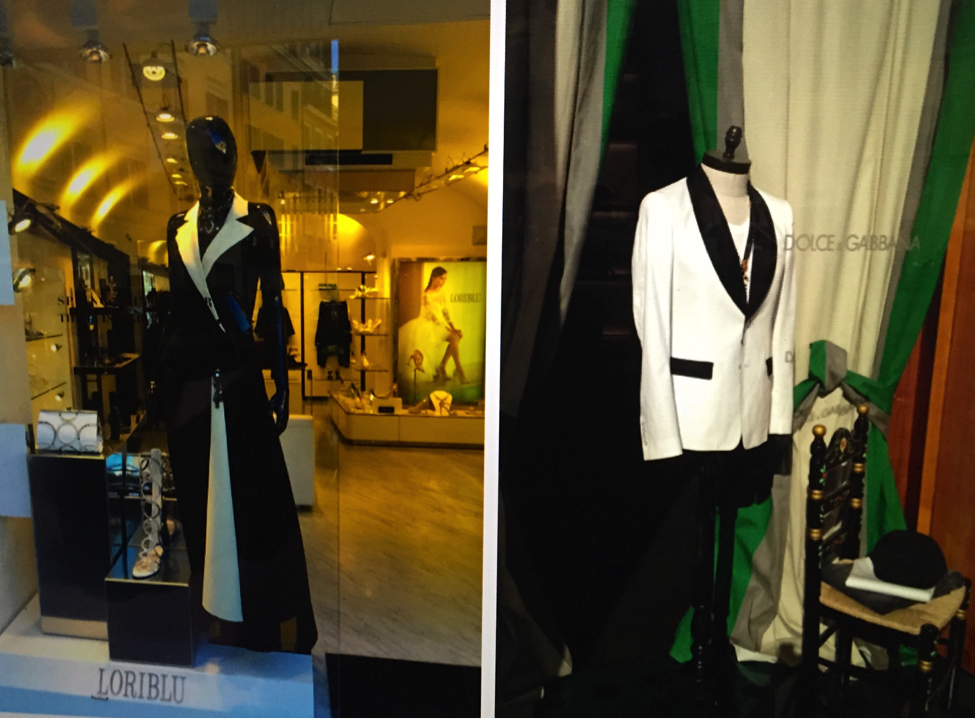 It’s not limited to the high end. It’s trending across economic strata. At breakfast this morning we sat next to a group of women friends meeting before work. Two of them, in black and white, agreed to let me take their pictures. The other women at the table went to lengths to tell me that the woman on the right was a famous soprano – though we didn’t get her name.
It’s not limited to the high end. It’s trending across economic strata. At breakfast this morning we sat next to a group of women friends meeting before work. Two of them, in black and white, agreed to let me take their pictures. The other women at the table went to lengths to tell me that the woman on the right was a famous soprano – though we didn’t get her name. 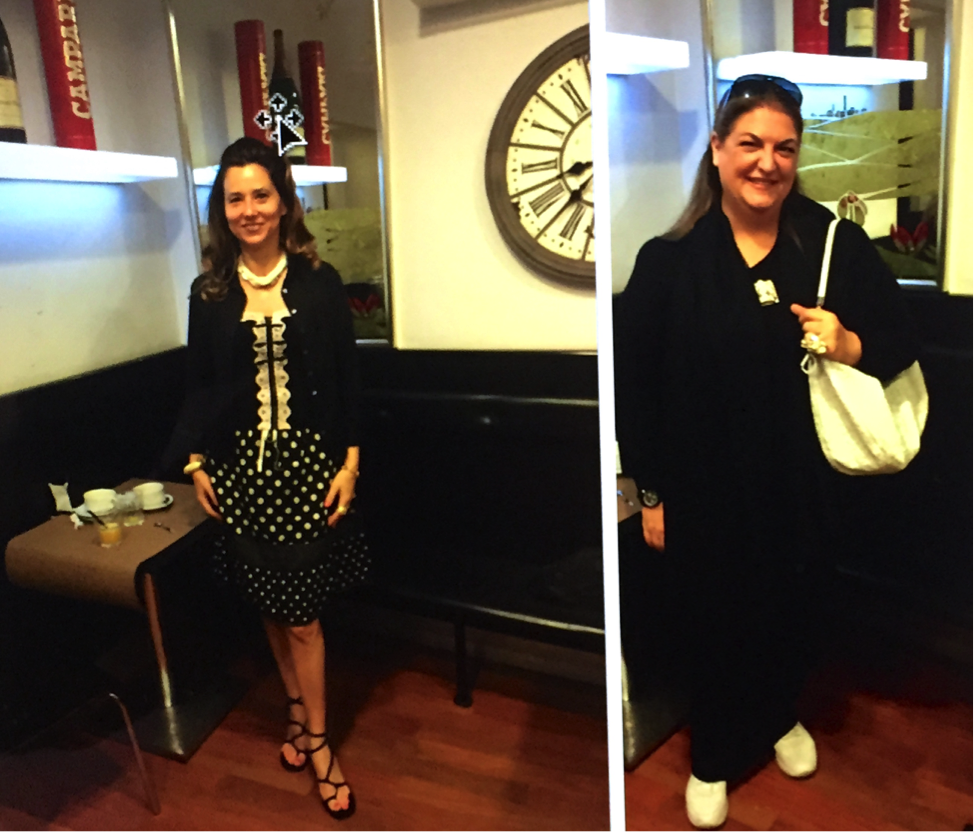 At another stop, the shop girl on the left (below) helped M look for a small leather purse. She got upset when I tried to take her picture without asking, but happily agreed to pose for this one, and I thought there was some irony in the fact that the woman washing the windows at Chanel fit right into the black and white fashion blog. Everybody is trending black and white.
At another stop, the shop girl on the left (below) helped M look for a small leather purse. She got upset when I tried to take her picture without asking, but happily agreed to pose for this one, and I thought there was some irony in the fact that the woman washing the windows at Chanel fit right into the black and white fashion blog. Everybody is trending black and white.
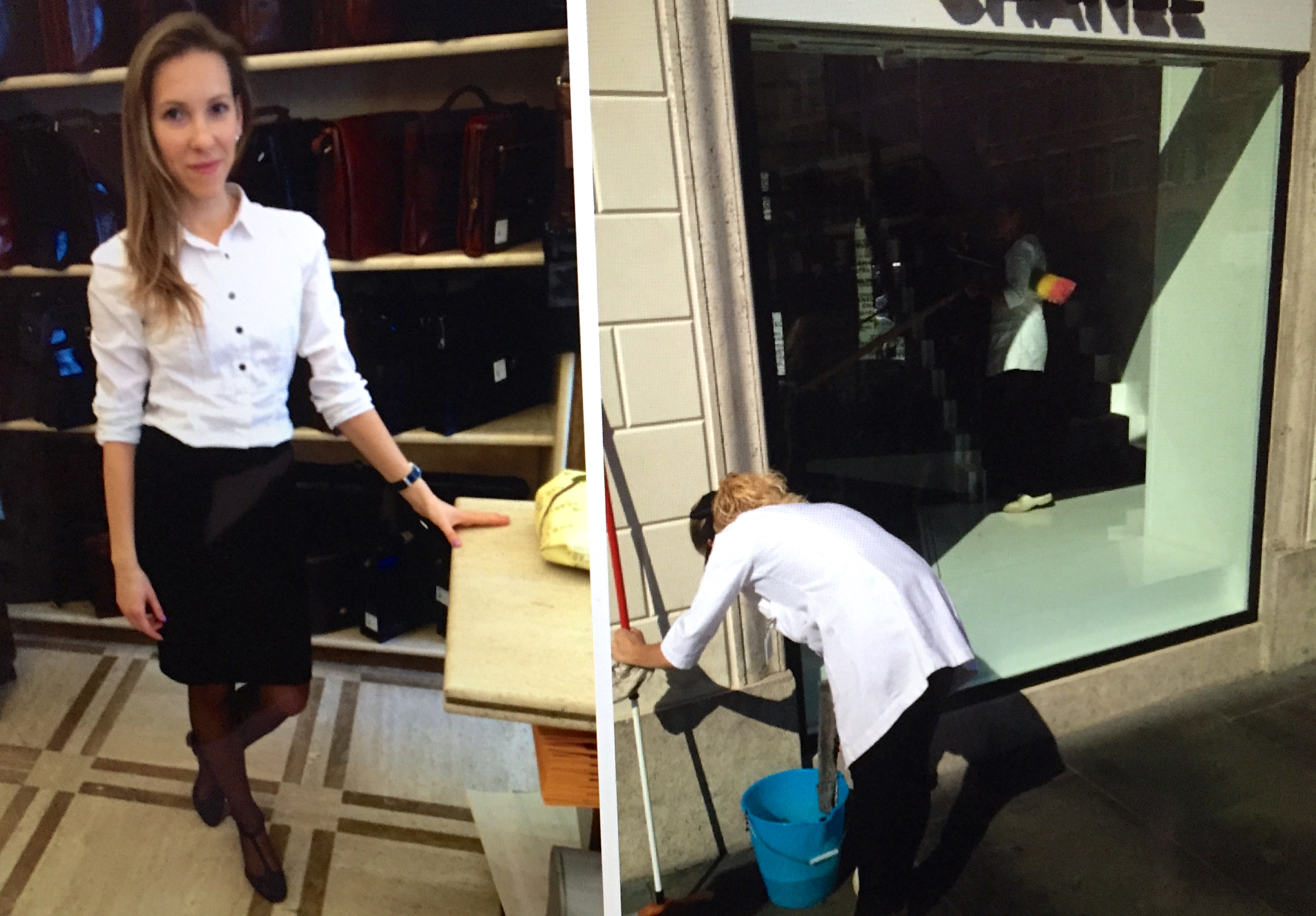
Just before lunch we saw these two women. The one on the left, beautifully dressed was pacing up and down Via del Babuino carrying on an animated conversation while the one on the right was loading up at the ATM for lunch.
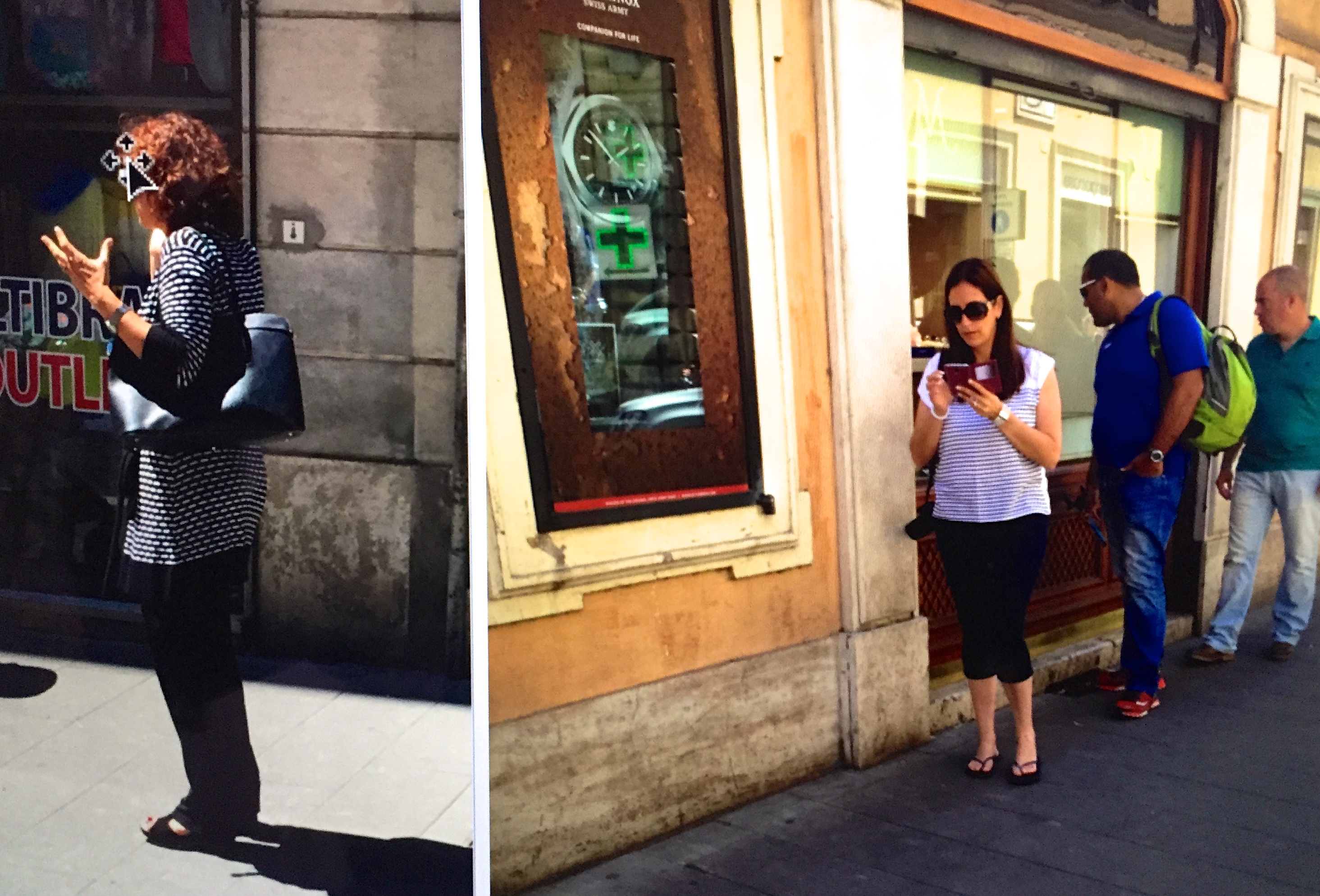 This might not be earth-shattering news, but Italy is at the forefront of design and fashion and it’s fun to be here and watch a trend developing. Whether it’s gluten-free pasta, racy sports cars, or street fashion, Italy is right there. In Bella Roma it’s all about food, fashion, and fun. And, we always finish with a little gelato.
This might not be earth-shattering news, but Italy is at the forefront of design and fashion and it’s fun to be here and watch a trend developing. Whether it’s gluten-free pasta, racy sports cars, or street fashion, Italy is right there. In Bella Roma it’s all about food, fashion, and fun. And, we always finish with a little gelato. 
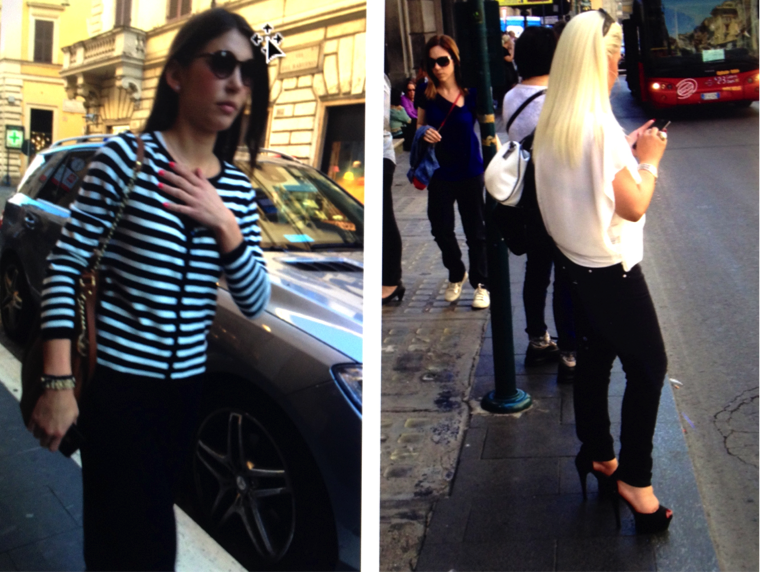

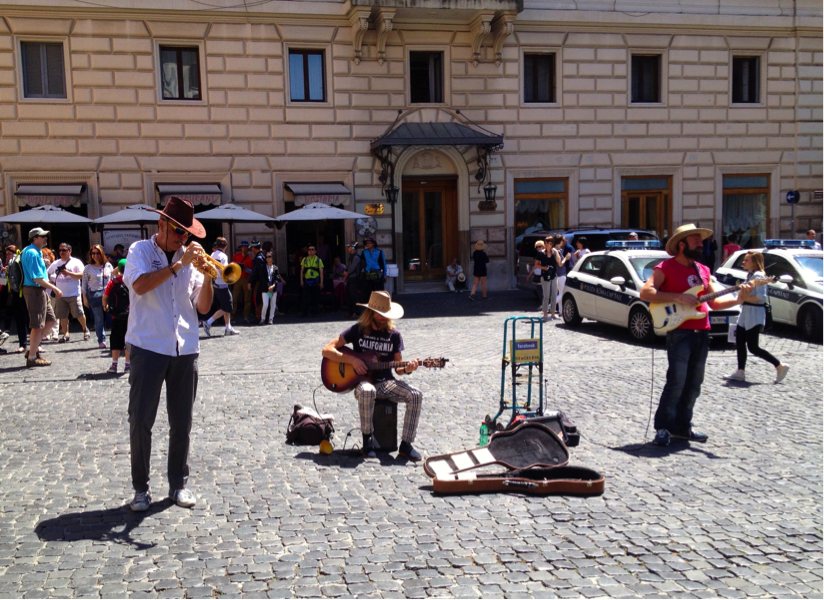
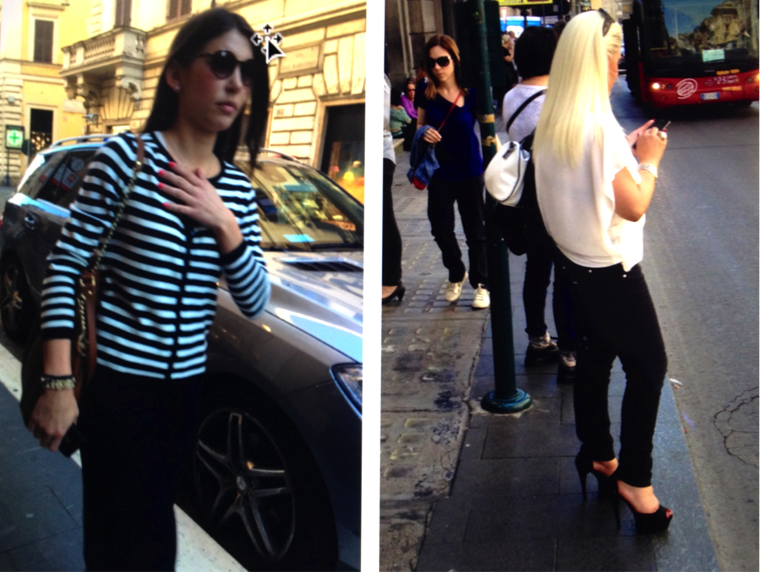







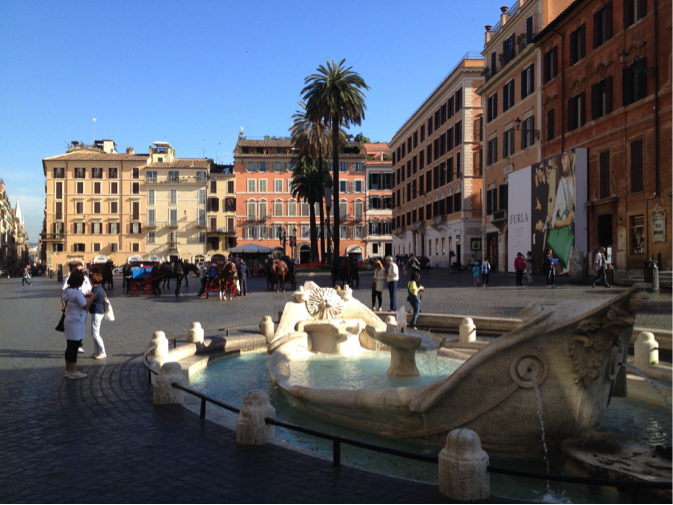
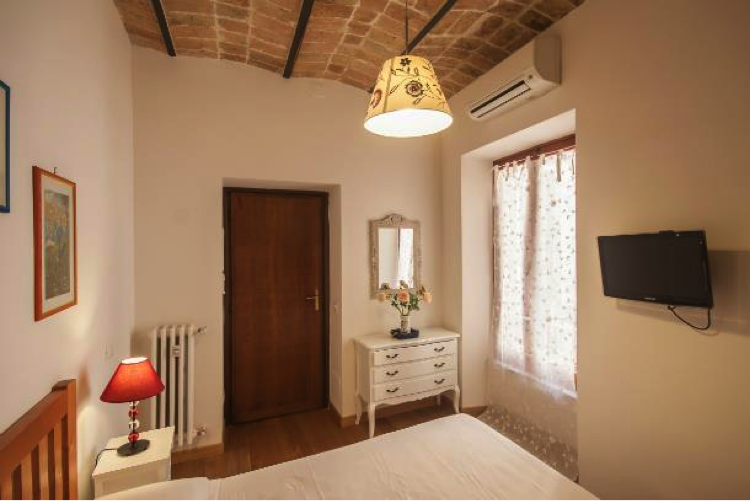
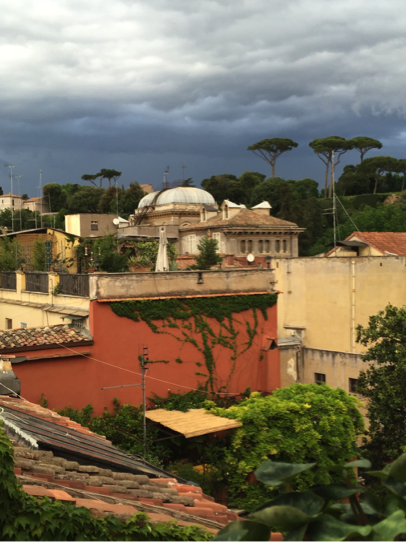
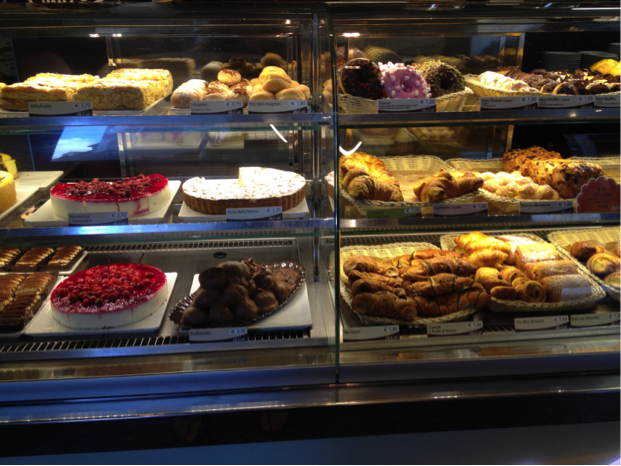



 I shouldn’t be so jaded. Of course there are people who can’t digest gluten and celiac disease is a reality for them. Novak Djokovic, the world’s number one tennis player, struggled with health issues for several years before switching to a gluten-free diet and then claiming the world number one ranking. It was real. I’ve known one or two others for whom the change to gluten-free was liberating, but I also know several trendsetters who bought into it and wear it like a badge of honor. The National Institutes of Health (NIH) puts the celiac population between .4 and 1%, but a walk down the aisle of your local supermarket would make you think it was taking over the country. I know it’s real but I believe it’s trending way beyond the celiac population.
I shouldn’t be so jaded. Of course there are people who can’t digest gluten and celiac disease is a reality for them. Novak Djokovic, the world’s number one tennis player, struggled with health issues for several years before switching to a gluten-free diet and then claiming the world number one ranking. It was real. I’ve known one or two others for whom the change to gluten-free was liberating, but I also know several trendsetters who bought into it and wear it like a badge of honor. The National Institutes of Health (NIH) puts the celiac population between .4 and 1%, but a walk down the aisle of your local supermarket would make you think it was taking over the country. I know it’s real but I believe it’s trending way beyond the celiac population.

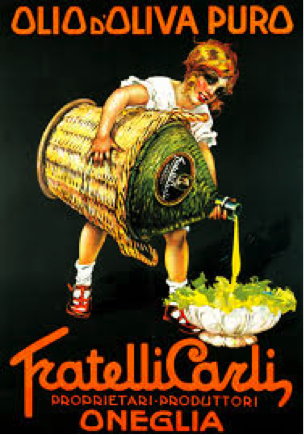
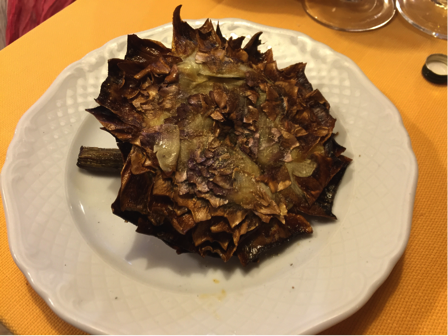
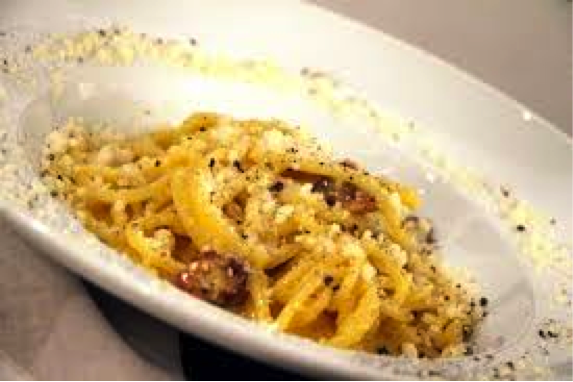 It’s amazing. I’ve made it my go-to dish in Rome and I’m looking for differences. So far, the only differences are in quality. I’ve had one bad, one incredible, and several very good. At Baccanale 59, a small restaurant in the Prati district, it was served in a bowl made of lacy toasted Reggiano.
It’s amazing. I’ve made it my go-to dish in Rome and I’m looking for differences. So far, the only differences are in quality. I’ve had one bad, one incredible, and several very good. At Baccanale 59, a small restaurant in the Prati district, it was served in a bowl made of lacy toasted Reggiano.